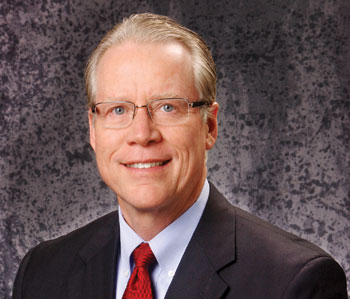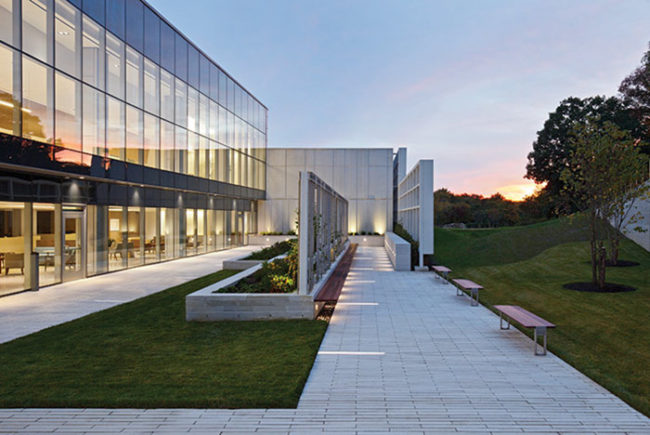 |
| Photo courtesy of Avera The Veline FileCV Education Background Accomplishments |
Jim Veline, senior vice president and chief information officer, Avera Health, talks about what it takes to establish and operate a sprawling telehealth network serving rural areas in several North Central states.
What is the scope of your eCare telehealth program and what types of patients are you reaching through the system?
Our program is twofold. First, we offer a traditional telehealth program called eConsult through which we reach out to our rural patients in South Dakota, Iowa, Minnesota and Nebraska.
We use our clinician specialists to provide follow-up consults, preoperative consults or general care to our patients who are in a remote clinic or hospital by using two-way video and audio. Most of the physicians providing services in the program are based in Sioux Falls, S.D.
Those specialty clinicians essentially would use a normal clinic visit, with the difference being we're using two-way video instead of face-to-face consultation. We do about 6,000 of those a year within our Avera family of hospitals and clinics.
Many telehealth visits are follow-up consults, so the person doesn't have to drive a long distance back to the main hospital or facility or clinic. In a sense, this is direct-to-patient care, meaning we have our Avera specialty physicians beaming in and providing patient care directly to a rural patient.
The other big piece of our telehealth program is that we provide clinical support to hospitals that are not part of the Avera health care system. We'll connect physicians and critical care nurses and others who support the intensive care units and the emergency departments (EDs) with patients in facilities in a seven-state area, including Wyoming, Montana, South Dakota, North Dakota, Minnesota, Iowa and Nebraska.
What other services are offered?
For ePharmacy, we do 24-hour order review. Typically, small hospitals do not have pharmacists in the building 24 hours a day, so we'll cover that gap.
For example, if the pharmacists work from 8 to 5 in a small town, they'll use our service after 5 o'clock and we'll review the order that the physician wrote. We're looking to prevent any kind of medication errors. We'll review the clinical history of the patient to see if there are any drug interactions he or she has had in the past; then we'll consult with the hospital's nurse and physician who are treating that patient and approve that order or ask questions, if necessary. We offer ePharmacy to about 50 hospitals across a six-state region.
With ePharmacy, it's mainly about exchanging data. We have a workforce-management software that tracks the orders and files them, segregates them and puts them into queues when needed. You need a mechanism to review patient information and the prescription order, and the software helps to facilitate that.
We offer eEmergency services. We have 85 hospitals for which we have a staff of critical care nurses and board-certified emergency physicians available on demand. If you're in a small hospital and there's a car accident and people are injured, typically these hospitals have one emergency room.
The hospital can utilize our eEmergency service to treat patients in cases when they get overrun because of space limitations. We also help only with consultation if you want to ask advice about a patient you're treating in the ED. The advantage is that our clinicians respond in about 30 seconds after getting a call for help.
We also offer intensive care unit services through our eICU program, which has an intensive care team available 24 hours a day. We use a sophisticated software system that sends alerts about patient vital signs and trends and helps Avera Health to intervene with the local medical team where the patients are being treated.
What's the technical infrastructure you established for the system to optimize communication?
You must have a highly reliable system. One aspect is that we use a private network, so we're not depending on the vagaries of the Internet. We have a team of technologists who support the network and test the sites every day.
Another aspect is that anyone on staff can access the emergency program. It's easy to use. We built an infrastructure with a red button that staff push to activate the teleconference system; that's all they have to know.
The facility must be able to accommodate the system's equipment. We use the same equipment everywhere, so it's easily supported. We use high-quality articulating cameras, and the exam rooms have excellent lighting so physicians can see details during exams. It's also important to have local area network capabilities.
We'll go into that hospital's medical records and look at the patients' medical records remotely. We're not moving the data back and forth, because we have access to the data by working inside the patient's hospital or clinic system. E-pharmacy is the best example. We will handle a prescription order as though we're actually sitting in the patient's hospital.
What system design issues and challenges did you face to achieve operability?
In every one of those service lines I mentioned — eConsult, ePharmacy, eEmergency — part of the implementation is the impact to the existing infrastructure of the building or facility. There's an assessment done prior to contracting for any related program services.
If someone requests it, we come out with an assessment and discuss any cabling or wiring involved with setting up the system. We hardwire most of these units.
There might be some work to wire a specific room to run cable because there needs to be access to the private network. There's a lot of planning involved before you can put this equipment in facilities.
The facility can be a challenge, especially if you've got a brick wall and you need to put in a cable port so you can plug the equipment in or run electricity. There are 32-inch monitors that get mounted on the wall for the video. You've got to have wall space and then you've got to make sure the wall is strong enough to hold the equipment.
What is the future of telehealth for home care?
We do not offer it yet. It is being used elsewhere, but it's slow-going so far. When patients are in their homes, they don't have any medical professionals with them, so you're limited in what you can offer.
Monitoring chronically ill patients helps them to manage their health by sending health data to clinicians. You see that kind of use with the elderly who have chronic illnesses.
It's fair to say that it will grow, but it's not consumer-friendly yet. Patients need to have the technology on their end for it to work and they need to be able to use it. You also need to protect everyone's privacy. You can't just use Skype and Facetime for videoconferencing, because they are not secure systems.
What advice do you have for other health care systems interested in launching a telehealth system?
You can't overemphasize the need for strong infrastructure support from IT and the facility, because without that solid backbone, it doesn't matter what you're trying to do. If you don't have the ability to deliver reliable service, then you might as well not try.




